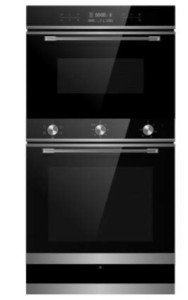The Comprehensive Guide to Built-In Ovens: Maximizing Kitchen Efficiency and Style
Built-in ovens are an essential function in contemporary kitchens, merging performance with smooth style. They provide a smooth look, enhance area efficiency, and typically featured advanced functions that elevate the cooking experience. This post will dig into the different types of built-in ovens, their benefits, important factors to consider throughout purchase, and upkeep ideas.
What is a Built-In Oven?
A built-in oven is created to be housed within cabinets, using an integrated look that saves counter space and boosts the aesthetics of a kitchen. Unlike freestanding ovens, built-ins supply flexibility in terms of placement and can be picked to match the kitchen's design.
Types of Built-In Ovens
There are a number of types of built-in ovens, each accommodating various cooking requirements:
| Type | Description | Ideal Use |
|---|---|---|
| Single Oven | A standard oven with one cooking compartment. | Everyday cooking, baking. |
| Double Oven | Two separate oven compartments, permitting multi-tasking. | Large meals, multi-course cooking. |
| Wall Oven | Set up at eye level, usually with sophisticated features. | Space-saving designs, ergonomic cooking. |
| Stove | Features a fan to circulate hot air, cooking food equally. | Roasting, baking, and more. |
| Steam Oven | Uses steam for cooking, retaining wetness and nutrients. | Healthy cooking, baking bread. |
| Microwave Oven | Integrates microwave and regular oven functions. | Quick meals, reheating. |
Benefits of Built-In Ovens
Built-in ovens provide various advantages, which makes them a popular choice amongst property owners. Some essential benefits consist of:
- Aesthetic Appeal: They can fit effortlessly into kitchen cabinetry, producing a sophisticated and consistent appearance.
- Area Efficiency: By making use of vertical space, they help optimize kitchen energy, especially in smaller sized areas.
- Advanced Features: Many come equipped with wise technology, self-cleaning alternatives, and accuracy cooking features.
- Enhanced Accessibility: Wall ovens can be put at eye level, minimizing the requirement for flexing and making it easier to keep track of cooking development.
- Customizable Options: Built-in options can be found in different sizes, surfaces, and styles, allowing individualized kitchen design.
Factors to consider When Choosing a Built-In Oven
When picking a built-in oven, there are a number of factors to think about to ensure that the home appliance aligns with the user's cooking choices and kitchen design:
- Size and Capacity: Measure the setup area to guarantee the selected oven fits. Consider the oven capacity based on cooking requirements.
- Kind of Cooking: Think about the preferred cooking techniques-- do you bake, roast, steam, or cook rapidly? This will determine the kind of oven to select.
- Features: Evaluate smart features, temperature level probes, multiple cooking modes, and cleansing choices.
- Energy Efficiency: Look for energy scores to save on utility expenses, particularly if the oven will be utilized often.
- Budget plan: Built-in ovens can vary significantly in rate, so it's vital to develop a budget plan and consider long-term investment alternatives.
Upkeep Tips for Built-In Ovens
To prolong the life of a built-in oven and maintain its performance, regular maintenance is crucial. Here are some useful ideas:
- Cleaning: Regularly wipe down the exterior and interior surfaces. click to find out more specialized cleaners for stainless-steel finishes.
- Self-Cleaning: Utilize the self-cleaning function periodically to keep the interior clean; however, prevent regular use to prevent wear and tear.
- Check Seals: Inspect the door seals for any damage to prevent heat loss.
- Use Safe Cookware: Ensure that baking sheets and pans work with the specific kind of oven to prevent damage.
- Routine Inspection: Schedule professional upkeep checks a minimum of as soon as a year to guarantee everything functions smoothly.
FAQs About Built-In Ovens
Q1: How do I select the best size built-in oven for my kitchen?A: Measure
the allocated area for the oven and consider the total capability you require based on your cooking practices.
Q2: Are built-in ovens simple to install?A: Installation can be intricate and typically needs professional help, especially for electrical and gas connections. Q3: How often need to I clean my built-in oven?A: It's a good idea to clean the oven regular monthly and use the self-clean function occasionally based on use frequency. Q4: Will a built-in oven increase the worth of my home?A: Yes, a premium built-in oven can improve the kitchen's appeal, potentially increasing home value. Q5: Can built-in ovens
be used for all kinds of cooking?A: Most built-in ovens can manage a range of cooking techniques, but customized types, like steam or stove, master specific locations. Built-in ovens are a fantastic addition to modern kitchens, blending functionality with design. With their several types, advantages, and adjustable options, they cater to varied cooking
requirements while boosting total kitchen design. By thinking about size, type, features, and maintenance, property owners can choose a built-in oven that serves their cooking design and lifestyle effectively. Buying a built-in oven not only elevates kitchen aesthetics but likewise transforms the cooking experience, making meal preparation more enjoyable and effective.

